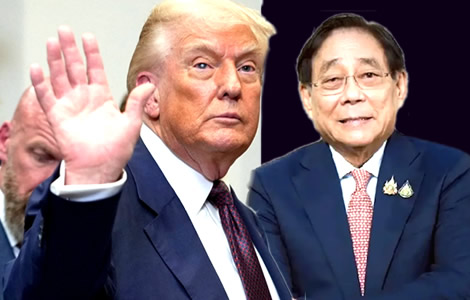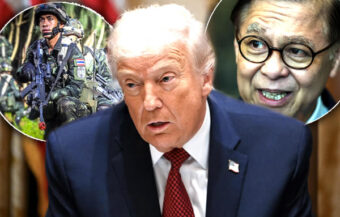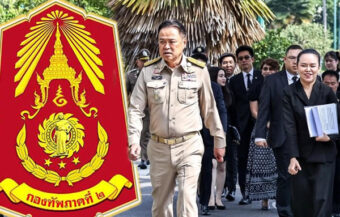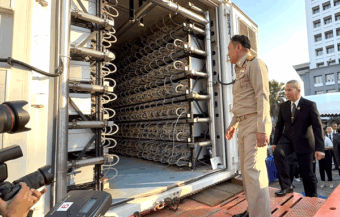Thailand secures a 19% US tariff rate, beating expectations and undercutting Vietnam’s 20%. The deal boosts exports, eases economic fears, and strengthens US ties. Finance Minister Pichai’s late-night talks deliver a major win for Thailand’s trade and investment future.
The Stock Exchange of Thailand (SET) jumped 0.79% in early Friday trading after news broke that Thailand had locked in a 19% US tariff rate. The deal is being hailed as a major win for the Thai government—especially Finance Minister Pichai Chunhavajira, who pushed negotiations to the wire late Wednesday night. The 19% rate puts Thailand on equal footing with Malaysia, Indonesia, the Philippines and Cambodia—and crucially, one point below Vietnam, its fiercest export rival. The agreement secures Thailand’s access to its top export market and sends a strong signal to global investors. A serious threat has been defused and the door is now open for deeper integration with US supply chains.

Thailand has secured a 19% tariff rate on exports to the United States, effective August 1, 2025. The decision followed a late-night announcement by the White House and was met with cautious optimism in Bangkok. Officials described the outcome as both a diplomatic success and an economic relief.
Finance Minister Pichai Chunhavajira, who led the final stages of the negotiations, is being credited with the breakthrough. The 19% rate is lower than the 20% imposed on Vietnam, Thailand’s closest trade competitor. It is also far below the 36% rate that had been threatened earlier in the month.
Analysts had expected harsher tariffs but Thailand secured a better-than-forecast result from Washington
Until this week, many trade analysts expected a far harsher outcome. In fact, most forecasts ranged between 20% and 25%. These projections were based on Thailand’s $46 billion trade surplus with the US and ongoing tensions along the Cambodian border. However, Thursday’s announcement defied expectations.
Notably, the US also set 19% tariffs for Cambodia, Malaysia, Indonesia, and the Philippines. Vietnam, in contrast, received a 20% rate. Brunei was hit with a 25% levy, while Laos and Myanmar face the steepest penalties at 40%. Singapore, long considered a close ally of the US, was spared the new hike and remains at the base 10% rate.
Before the announcement, Finance Minister Pichai had said he hoped for parity with Southeast Asian neighbours. That prediction proved accurate. Still, the result was not automatic. Thailand had to make bold economic concessions to earn that outcome.
Thailand offered deep trade access and helped end border clashes to secure a favourable US tariff deal
In recent days, Thailand offered significant trade access to the US market. The country pledged to remove tariffs on 90% of American goods. It also committed to cutting its trade surplus with the United States by 70% over the next three years. These steps included reducing non-tariff barriers and preventing the rerouting of third-country goods through Thailand.
Moreover, the US emphasised reciprocal trade and security cooperation. President Donald Trump stated earlier this month that tariff relief would be contingent on regional peace. Just days ago, Thailand and Cambodia signed an emergency ceasefire to end deadly border clashes. The violence had escalated into the worst regional conflict in over a decade, with more than 40 casualties reported.
Although the ceasefire remains fragile, it was enough to meet Washington’s conditions. Malaysia played a central role in mediating the agreement and, in turn, received the same 19% rate. However, the situation is still evolving. Thai officials on Thursday accused Cambodian forces of violating the truce. Despite this, both sides have refrained from further escalation.
US Commerce Secretary Howard Lutnick confirmed the new tariff schedule in a Wednesday interview. While specific details were scarce, he called the deal a “model of mutual benefit.” The 19% rate, he said, reflected Thailand’s cooperation and responsiveness in recent negotiations.
Revised global tariff schedule puts Thailand in strong position as economic risks begin to ease
The new tariff regime is part of a wider policy shift. The White House released a revised tariff table for dozens of countries. Among major US trade partners, Japan and South Korea were assigned a 15% tariff. Taiwan will face a 20% rate. India was handed a steeper 25%, despite earlier efforts to reduce its duties on US goods. Syria now holds the highest rate at 41%.
For Thailand, the 19% result represents both relief and opportunity. The United States is Thailand’s largest export market, accounting for 18% of total shipments in 2024. A higher tariff could have been devastating for the country’s already fragile economy.
Thailand’s economy has struggled with high household debt and weak domestic consumption. Growth this year was previously projected at over 2%. However, officials now believe that the target may still be achievable. The removal of trade uncertainty provides breathing room for exporters and investors alike.
Markets responded with moderate optimism. Thai stocks closed just 1.79 points lower in Thursday’s afternoon session. Trading was light, with investors awaiting more Q2 earnings results. Analysts said the tariff news eased earlier concerns over a sharp decline in exports.
Government launches support centre and confirms tariff system to help exporters adjust by year’s end
The Thai government has launched support measures to help exporters adapt. The Prime Minister’s Office confirmed the creation of a “One Stop Service Centre” to provide assistance. This includes customs guidance, tariff calculators and legal advisory services. The centre is expected to operate throughout the second half of 2025.
Transitioning to the new framework will take time. Nonetheless, officials say the structure is clear. From August 1 onward, US-bound Thai exports will face a flat 19% tariff. In exchange, 90% of American goods will enter Thailand tariff-free. This structure mirrors recent agreements reached with the Philippines and Indonesia.
The Ministry of Finance says these changes reduce one major source of economic uncertainty. With regional competitiveness maintained and market access protected, Thai exporters can focus on innovation and expansion.
Meanwhile, the political symbolism is clear. Thailand’s willingness to resolve conflict, open its markets, and meet US trade demands has drawn praise from Washington. This could strengthen bilateral ties in both economic and security spheres.
Thailand poised to gain export edge over Vietnam as US integration deepens across key industries
The new agreement also repositions Thailand in the broader ASEAN context. Previously, Vietnam was seen as the regional favourite for US trade. But with Vietnam’s rate set at 20%, Thailand may now gain a pricing edge in several sectors, including electronics, auto parts, and food exports.
While short-term challenges remain, the long-term outlook is less uncertain. The 19% rate provides a floor—not a ceiling—for deeper cooperation. Finance Minister Pichai has already indicated that a new round of trade missions to the United States will begin this autumn. The goal will be to expand Thai presence in US supply chains.
Last minute tweaks in Bangkok as deal is finalised with U.S. However, Thailand may not match Vietnam
Finance Minister explains the Kingdom’s latest offer to US officials as Thailand pursues competitive tariff deal
Officials are also hoping for further discussions in 2026. These talks could include digital trade, services, and environmental standards. For now, however, the focus remains on stabilising the current trade structure and ensuring that Thai firms can adjust smoothly.
Overall, Thailand’s trade diplomacy has paid off. Through quick action, compromise and coordination, the country avoided damaging tariffs and reaffirmed its regional position. The 19% tariff rate may be a number, but it represents a broader strategy—one built on negotiation, not confrontation.
Join the Thai News forum, follow Thai Examiner on Facebook here
Receive all our stories as they come out on Telegram here
Follow Thai Examiner here
Further reading:
Last minute tweaks in Bangkok as deal is finalised with U.S. However, Thailand may not match Vietnam


















